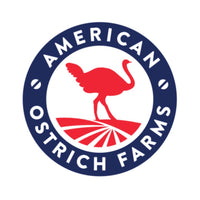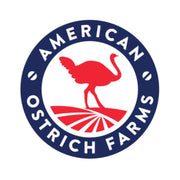“Farm-to-table” (sometimes called “farm-to-fork”) traditionally refers to the use of food that has been grown, prepared, and consumed either on-site in a single location, or without passing through a middleman such as a grocery store or other distributors. The traditional meaning has been blurred somewhat by its use to describe farmer’s markets, restaurants that source local or regional foods, and even grocers that retail foods from local and regional producers. Today, farm-to-table is as likely to refer to greater transparency in food sourcing and support for local/regional producers, in addition to the traditional meaning.
The implementation of farm-to-table principles are meant to:
Improve sustainability: By avoiding large-scale food production companies, consumers can reduce pollution and waste in their diets.
Encourage ethical production: Large-scale food production companies are also more likely to treat animals and the local environment poorly.
Boost the local economy: By buying food products from local companies, you are circulating money back into your community.
Give people peace of mind about where their food comes from. When you buy food from producers who transparently explain where their products come from, you will be able to learn more about production methods and make better purchasing decisions.
Make communities and the overall food system more resilient: By encouraging the development of smaller scale, distributed food production, the entire food system becomes more self-sufficient and resistant to shocks like COVID-19. Many proponents of the farm-to-table movement consider this an important goal of the movement, with the eventual objective of developing local food production to the point that it is feasible for every demographic in the community to reliably obtain locally-sourced food. This theoretically would combat negative consequences relating to socioeconomic inequity, such as food deserts.
However, it is important to note that the implementation of farm-to-table principles can be difficult to achieve in practice due to factors such as the cost and the seasonal nature of most local food production. Therefore, it often takes a great deal of community support and assistance from like-minded distributors to successfully carry out a farm-to-table philosophy.
THE HISTORY OF FARM-TO-TABLE
Farm-to-table used to be the norm. In fact, it was a necessity for most, as large-scale commercial food production is a relatively modern development. However, as the distribution of products over long distances became more feasible, consumers took the opportunity to purchase products that were less expensive or scarce in their area.
FROM THE FARM TO THE VICTORY GARDEN
World War ll was one of the driving factors in the shift away from local food sourcing. Industrialization for the sake of the war effort revolutionized the manufacture and distribution of many products, including food and its packaging. Faster manufacturing also resulted in an explosion of residential growth, with homes becoming relatively inexpensive. Meanwhile, many returning soldiers used their veterans’ benefits to move into these suburban homes, in lieu of returning to the small farming lifestyle of many of their forebears.
As such, there was a perfect confluence of improved manufacturing and shipping methods with an increase in demand for food products that people were no longer growing themselves. In the following decades, improved preservation methods and the low manufacturing costs of increased scale that large companies achieved would further solidify the shift away from locally-produced food.
FAST FOOD AND CONVENIENCE CULTURE
Improved distribution and manufacturing methods were put to further work providing convenient food for the masses in the 1950s and 1960s when the fast-food industry exploded onto the scene. Because the foods served at these establishments needed to be inexpensive, filling, and last a long time in transit, they were largely empty calories embalmed in preservatives. The reduced prices and increased convenience allowed Americans the option to spend less time making home-cooked meals.
ORGANICS, SLOW FOOD, AND THE BUY LOCAL MOVEMENT
The hippie movement of the 1960s, with its focus on community self-sufficiency and social justice, sparked a renewed interest in local, responsible food-sourcing. These ideas flourished in mainstream culture over time as the benefits to local communities became clear. This momentum eventually gave birth to the organic, slow food, and plant-based movements, which emphasize the health of the planet, the community, and the individual through a renewed emphasis on the importance of food production methods and sourcing. This about-face has the potential to reverse the recent trajectory of the agricultural industry, enabling a greater number of small businesses distributed throughout the country to play a bigger role in our food system.
THE FUTURE OF FARM-TO-TABLE
There are many expected benefits and challenges for the farm-to-table movement in the years to come.
BUILDING DIRECT RELATIONSHIPS WITH FARMS AND PRODUCERS
While there are many benefits to fostering this direct relationship between farms and consumers, there are challenges that should be addressed. There are many variations of farm-to-table practices, and consumers don’t necessarily need to take their food directly from the hands of the farmer who grew it to espouse the principles of farm-to-table. Especially during the transitionary period into farm-to-table practices, intermediary distributors may still be necessary to transport or sell the goods on some level.
There are differing ideas as to what “local” really means in the context of the farm-to-table movement. Some businesses that operate under a farm-to-table philosophy may only use food produced within city limits, while others may accept food produced within a certain distance, and still others may simply be aware of what farm or company the food comes from and that it was produced in a way that is consistent with the values of the consumer. Although, it is important to note that due to the fact that community-building is a core goal of the farm-to-table movement, the companies that you source from should in some way be part of the community or operate symbiotically with it.
That said, other primary goals of the farm-to-table movement regarding mindful sourcing can still be accomplished even if the food is not entirely “local.”
SUPPORTING LOCAL AND INDEPENDENT RESTAURANTS
While restaurants can benefit greatly from employing farm-to-table principles due to popular demand, it is often not a simple transition. Operating within farm-to-table parameters creates challenges such as increased expense, need for research and outreach, limited menus, and season-dependent ingredients. This is yet another reason why it is so important that there is a lot of buy-in from the community when it comes to increasing farm-to-table sourcing methods. Businesses need the support and patronage of locals in order for the effort to be successful.
PRIORITIZING SEASONAL AND SUSTAINABLE INGREDIENTS
As mentioned, when businesses take on the challenge of farm-to-table sourcing, they often have to grapple with the seasonality of locally-produced foods. Restaurants that operate under farm-to-table principles therefore often employ seasonal menus, or even a menu that transitions frequently depending on what is available.
It is also important to note that some food products take a heavy toll on the environment regardless of where and how they are produced. For example, corn production and conventional beef production techniques notoriously require a lot of land and water. As sustainability is another core component of the farm-to-table movement, it is also important to keep in mind the inherent environmental costs of some food products, rather than just the producer’s proximity to the ultimate location of consumption. Some produce and meat products, such as ostrich, are inherently more sustainable due simply to their biology and how they are farmed. Many businesses are employing innovative ways to produce more sustainable food, from the implementation of no-till and free-range farming to the use of alternative meat sources like ostrich. Unorthodox food choices sources can be leveraged for a wide array of seasonal recipes.
In short, it is important to not miss the forest for the trees. Ultimately, the underlying goals of the farm-to-table movement are more important than staunchly abiding by the standard operating principles.






